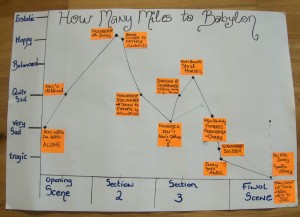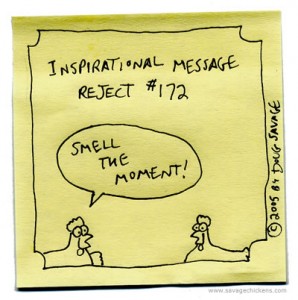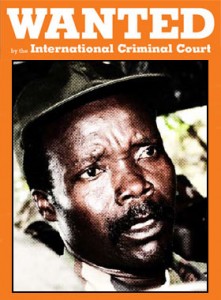 Lots of students – and teachers if we’re honest – struggle to define the concept of general vision and viewpoint. It can seem kind of vague and wooly beside the others modes, which are pretty straightforward once you get a grasp of them.
Lots of students – and teachers if we’re honest – struggle to define the concept of general vision and viewpoint. It can seem kind of vague and wooly beside the others modes, which are pretty straightforward once you get a grasp of them.
—
I guess there are two main elements to gv+v
—
Element one: first let’s think about the person who creates the text. When a writer writes a book or a play or directs a film they have a particular view of the world and of the human beings who live in it! In really really simple terms, if their stories always have a happy ending, if the characters triumph over adversity, if true love conquers all, if good is rewarded and evil punished, then the vision of the world they offer is positive and their viewpoint is optimistic. Very few texts will be this straightforward however. Often bad things happen to good people in texts and the vision never stays the same the whole way through – but we’ll come back to this later!
—
For now though, let’s keep it simple!
—
So as described above the first element to gv&v is created by the writer.
—
The second element however is something the writer cannot control – and this is the way the reader/viewer responds to the vision they have created. I, for example, don’t like romantic comedies. I think they are formulaic, predictable, simplistic and sickly sweet. So even though the person who wrote it might want me to respond positively to the vision they are offering, I probably won’t.
—
Now let’s look at a specific exam question:
I think the wording of the question might be confusing at first. Keep this in mind – ultimately YOU decide what vision of the world is being offered. Thus you could write this sentence in your essay: “In my opinion, the director offers a very romantic and idealistic vision of relationships in the scene where……..(fill in specific details) but I personally find this viewpoint overly simplistic and cliched. He wants the viewer to be swept up in the drama, and uses a sweeping violin score to achieve this, but I found myself rolling my eyes rather than sighing wistfully“.
—
And then of course you have to tie this into another text, and then another. To see how this is done, have a look at my post “
Cracking the Comparative“
—
You may also have noticed a third, related element to gv&v which is HOW the vision is communicated. This refers to HOW the mood and atmosphere is created – for example through close-ups of facial expressions, through music, through symbolism, through flashbacks (to create nostalgia or to add backstory), through the relationships between characters & how they treat each other, through the way the society is presented to us in a positive or negative light.
—
Bearing all of this in mind, what kind of questions can you be asked?
- A straightforward question will just ask you to discuss the writer’s viewpoint (element 1).
- A slightly more complicated question will ask you to focus on your feelings – on how you respond to the view offered by the writer/director (element 2).
- A variation on a simple vision question is one which asks you to discuss the writer’s view and look at how this is communicated to the reader (a combination of element 1 and element 3).
—
As I mentioned above, the gv&v changes during the course of any text. One exercise I did with my class was to draw up a graph – see photo above. The vertical axis went from tragic at the bottom to blissfully happy at the top. The horizontal axis went from the beginning (on the left) to the end (on the right) of the text. Then we picked maybe eight key moments and plotted them on the graph. This gave us a clearer sense of how the gv&v changed, ebbed and flowed over the course of the text from beginning to end. However it is a little simplistic – you need to offer a more complex discussion than “happy/sad” (nostalgia, longing, frustration, injustice, tragedy, triumph, humour are all more specific words that spring to mind!) AND you need to think about whether the author offers you a positive, fond and uplifting view of human beings or a deeply pessimistic indictment of human beings’ flaws and foibles. Think about the writer/director’s vision of the society the characters inhabit. What decisions has the writer/director made as to how the text begins and ends. Does the story begin and end at the same point (as in Babylon)? Have the characters achieved anything in the intervening period? Is the text a gradual journey towards enlightenment and self-fulfillment? Or does everything end badly, despite the characters best efforts to achieve happiness?
—
Because the concept is quite multi-faceted, try to simplify your overall essay structure.
Compare the beginning gv&v of each text.
Then compare gv&v about a third of the way in.
Next compare gv&v about two thirds of the way in.
Finally compare the gv&v of the endings.
—
And of course the most important thing is to tie them together in the way that I described in the post “
Cracking the comparative“.
Hopefully that will clarify things somewhat!









